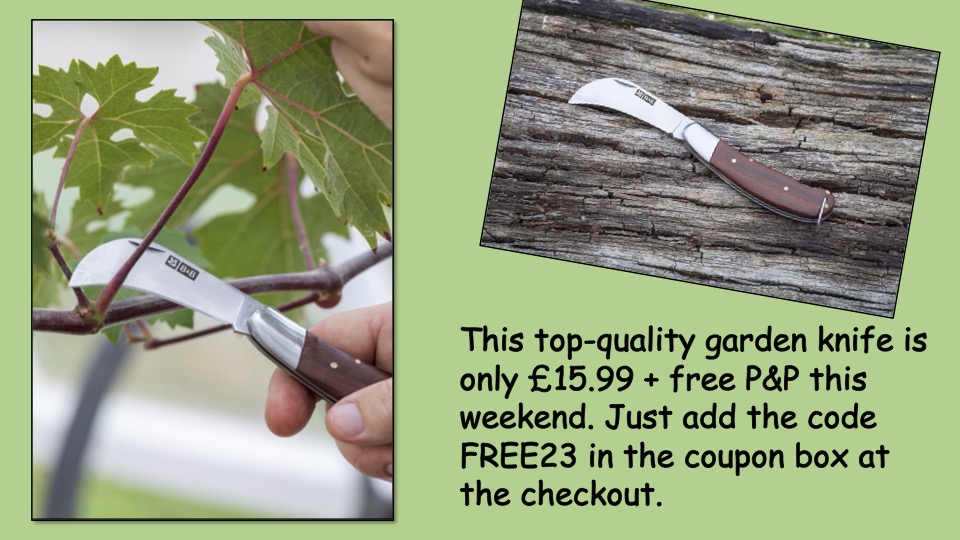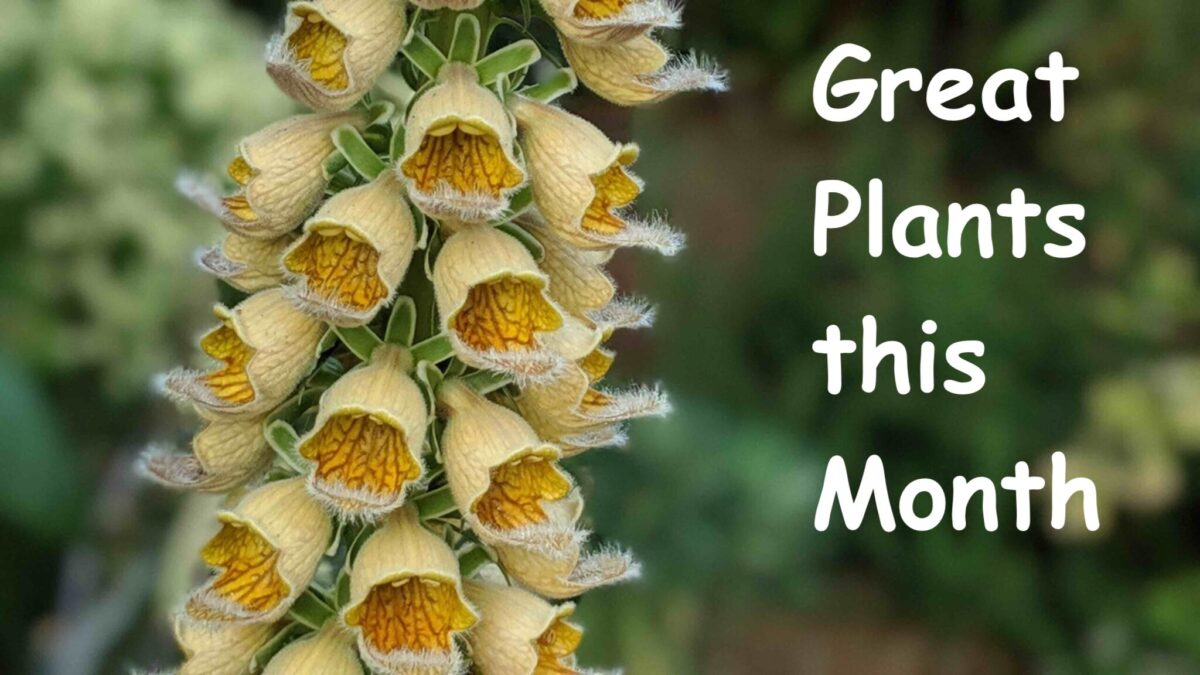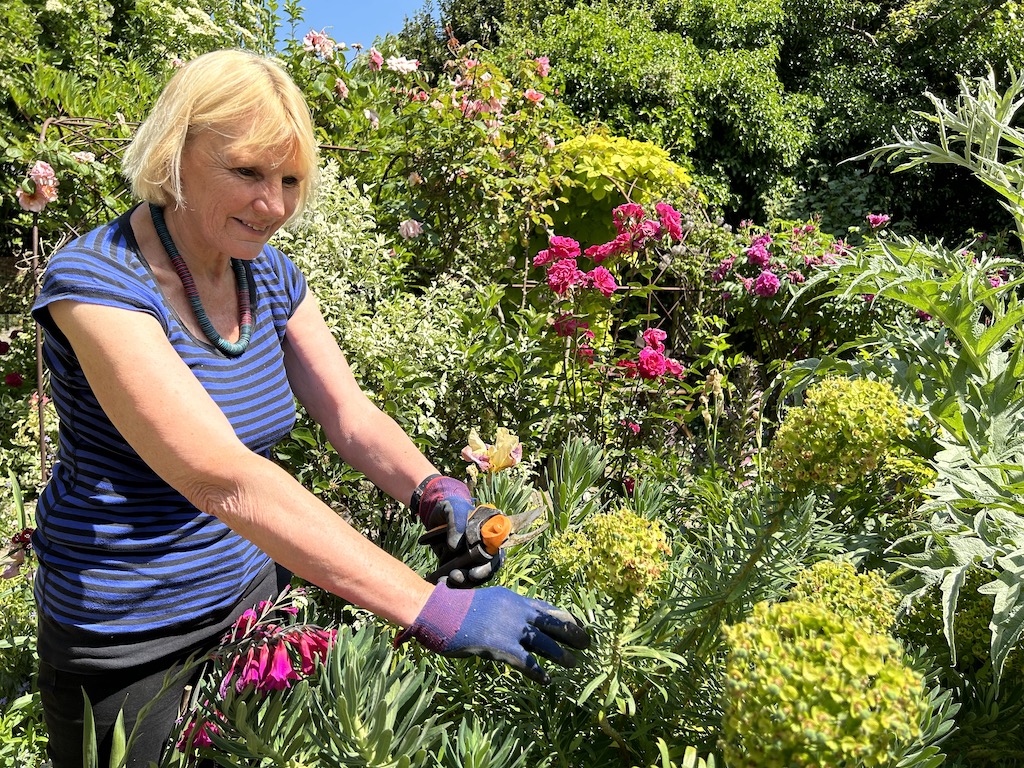
Oooft, it’s been proper hot this week round here! Things are bearing up well….so far, but I’m keeping a very wary eye on plants that may struggle, particularly anything planted this spring.
In the meantime, how about making easy free plants, cutting sweet peas, and sowing lettuces amongst other jobs…
Free plants
The price of plants these days! Even quite common ones. It feels utterly bonkers not to try taking cuttings of some of them and populate your garden for the cost of some simple kit and effort.
Here are just a few of the plants you could take cuttings of right now: Penstemon, rosemary, lavender, Buddleia, Fuchsia, Hydrangea, Aubrieta, Argyranthemum, Anthemis, Pelargonium, Petunia, Lavatera, Euonymus, Sambucus……….it honestly is a very long list, and it’s worth trying just about anything.
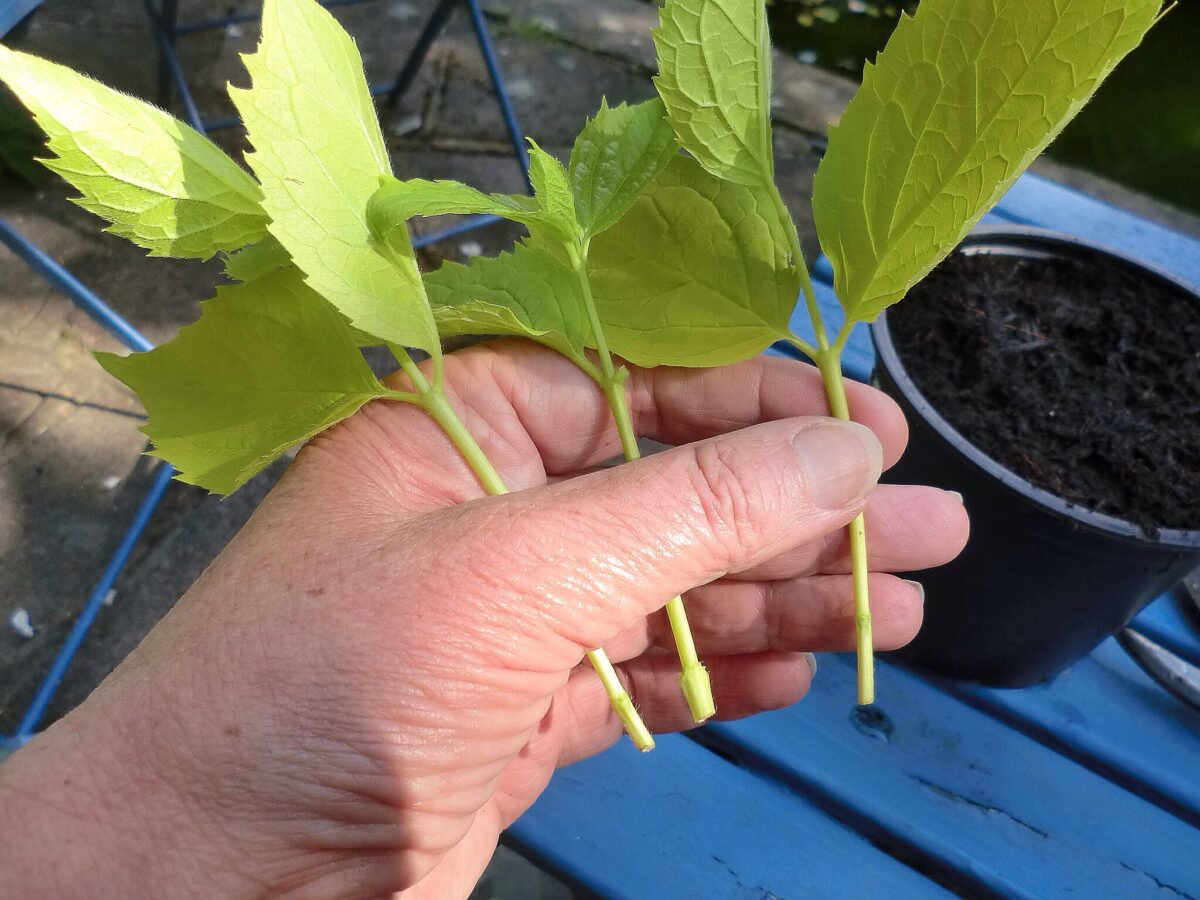
Softwood cuttings are taken in early summer, and if you obey a few simple rules, they have the best chance of growing of any type of cutting.
You need fresh soft growth, and, especially given some of the heat we’ve been experiencing recently, go out early in the morning to collect your material while the shoots are still full of moisture. If your parent plant is actually rather old and gnarly, one trick to get some young fresh growth, is to give it a severe prune – that usually makes a plant stir its stumps, and throw up some new shoots just right for this process – you’ll just have to wait a bit longer before you take your cuttings.
You’re after shoots about 10 cm (4”) long, preferably non-flowering ones (if they have got flower-buds on, nip them out with your thumb and forefinger). Try to cut just above a leaf-bud on the parent plant.
They must STAY full of water, so put them straight into a plastic bag. The quicker you deal with them, the better.
Tidy up your cutting by taking off all but the topmost leaves using a sharp knife – we have the PERFECT one in our online shop, with all the hallmarks of the usual Burgon & Ball quality and we’ve got a very handy offer on them this week. Also pinch out or cut the topmost soft tip.
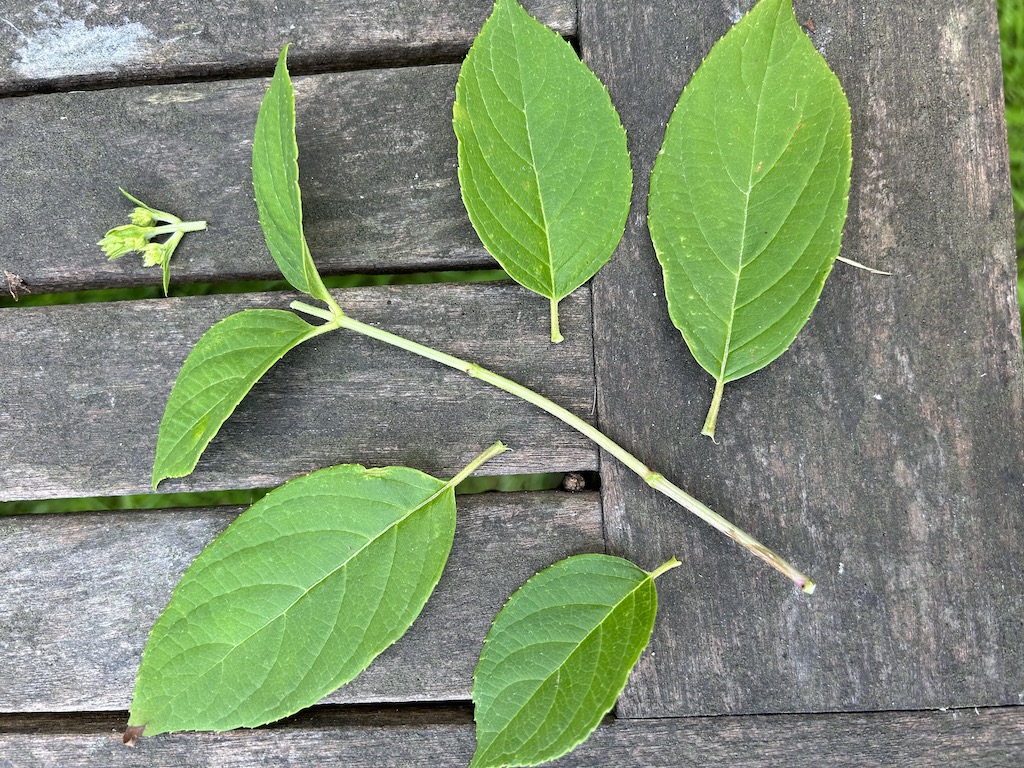
Fill a pot with peat-free compost and make a hole with a pencil first if they are too soft to push in. I push in 3-5 round the side of a small pot. Water the pot, and put it in the plastic bag, fastened with a rubber band (or put the pot in an unheated propagator if you have one). Take off the plastic bag twice a week for a few minutes to give the cuttings some ventilation.
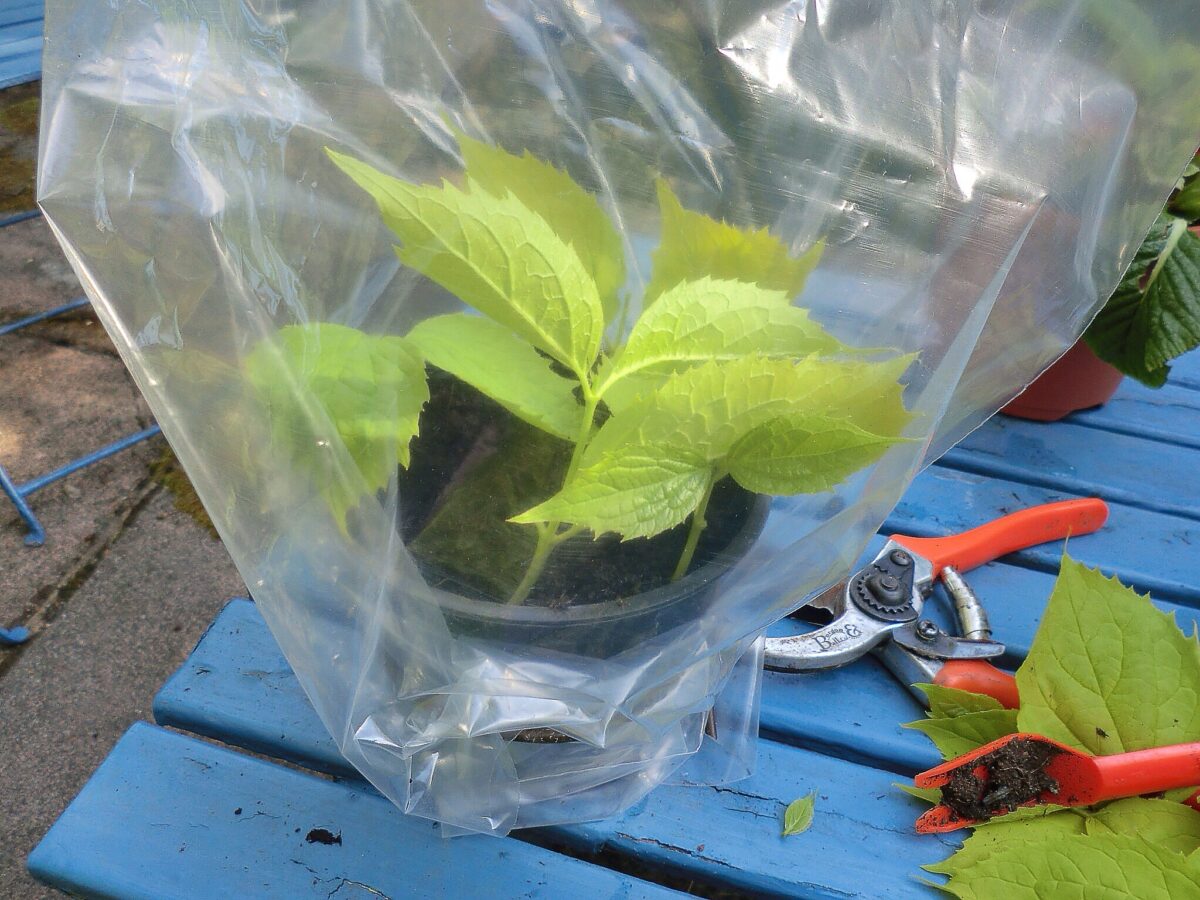
Put the pots of cuttings in a warm place but not blazing sunshine. High humidity is what you’re aiming for – your little plant pieces need to feel sufficiently pampered in a sauna to start making roots before they lose all their water and shrivel. If you think it’s too sunny, put some horticultural fleece over the top which sort of diffuses the light. Most will root within a few weeks – hey presto! Lots of new plants to keep or give away, that cost you zilch.
You and Euphorbia
I love the zingy lime-green heads of Euphorbia characias through the springtime – almost every colour of flower can be livened up with a shot of lime, I reckon – much like a Mojito cocktail!
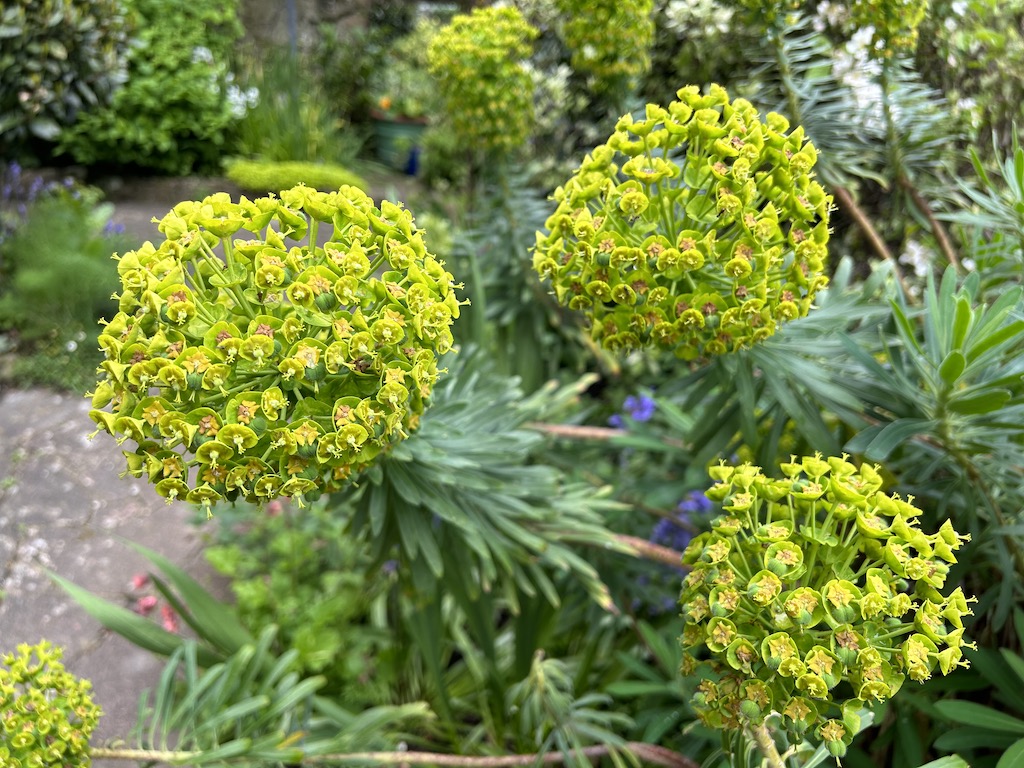
But they are going over now, turning yellow then brown, and I know that they will start seeding all over the garden if I leave them. Not only that, the fresh blue-green leaves are coming up from the bottom and the fading flowerheads are spoiling their appeal.
So it’s time to don gloves (ALWAYS wear gloves when you are doing anything with Euphorbia – the white sticky sap is a wretched irritant on skin), and cut the flower stems out.
Try to cut as close to the base of the plant as you can. When you’ve finished, remember to clean your secateurs with warm soapy water to clean away the sap – a rub with some vegetable oil keeps the rust away.
Gardening shorts
- Aren’t sweetpeas utterly fabulous! What colour! What scent! To keep them flowering, you must fool them into thinking that they haven’t done their job yet. The moment they begin to turn their flowers to seedheads, they stop producing flowers, throw in the towel and go into terminal decline. So keep picking them madly, filling bowls and vases all over the house, and everyone else’s houses, with these beautiful flowers.
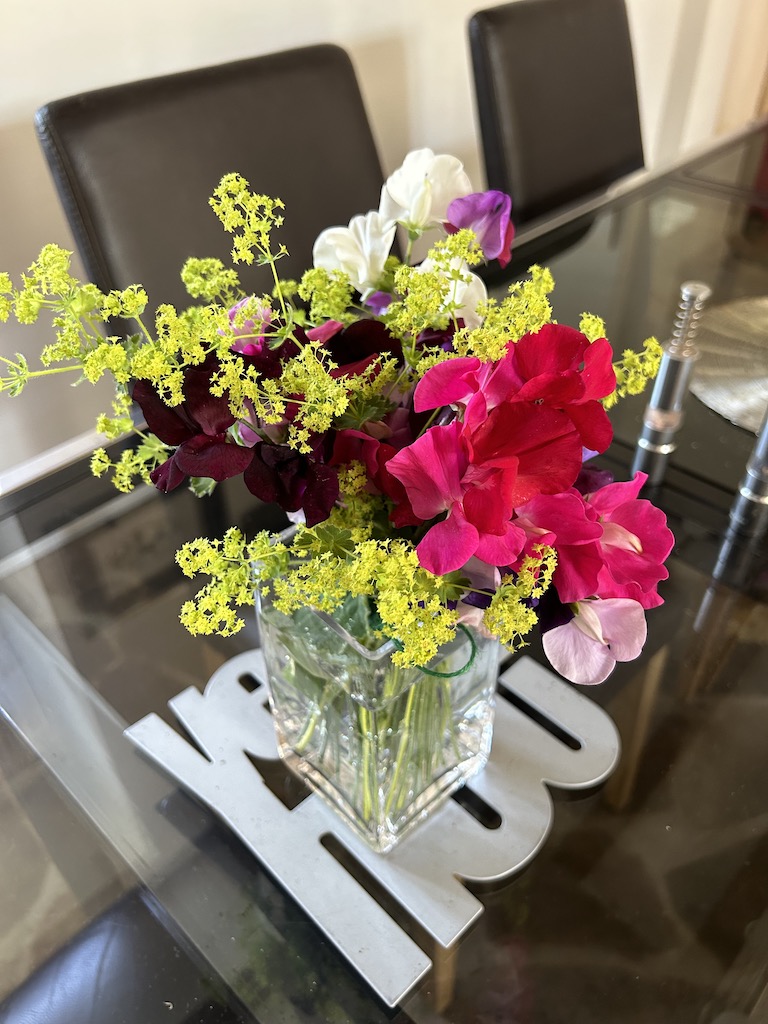
That way, you’ll get a much longer season from them. By the way, water them as often as you would water a veg patch – go on, they’re worth it!
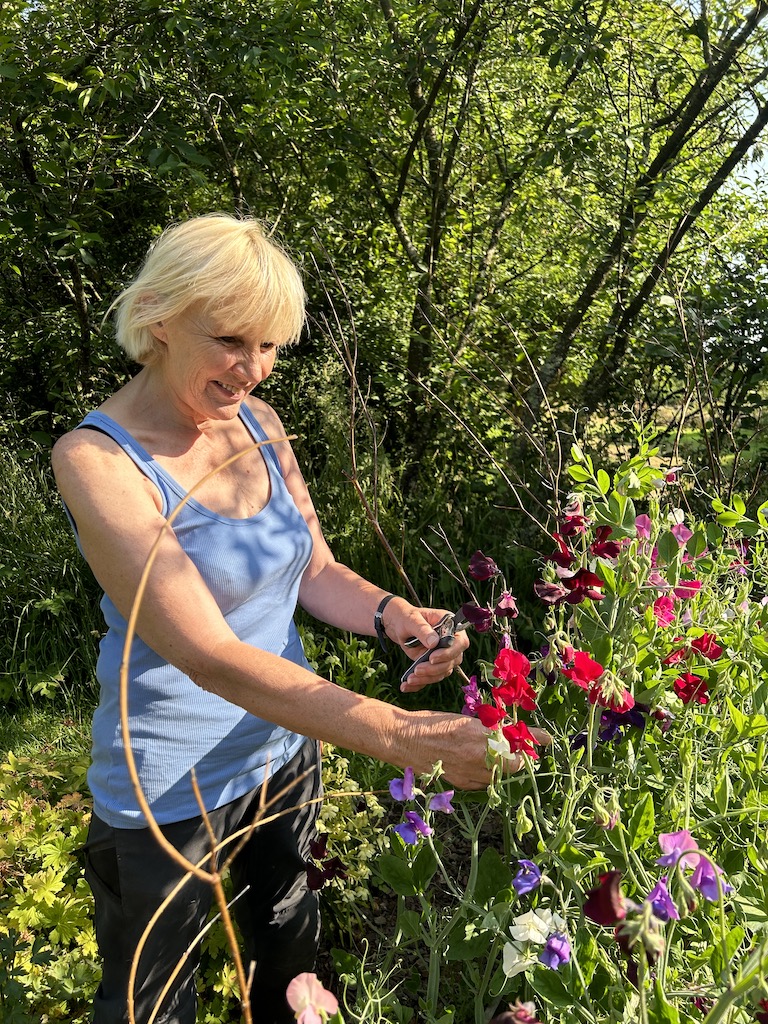
- Keep sowing salads, beetroot, radishes – you’ll still want all those sorts of goodies in September and beyond. Pots of leafy things grown in shadier spots might have a much better chance of success (and less bitterness to the leaves) than when grown in the heat of the main veg area.
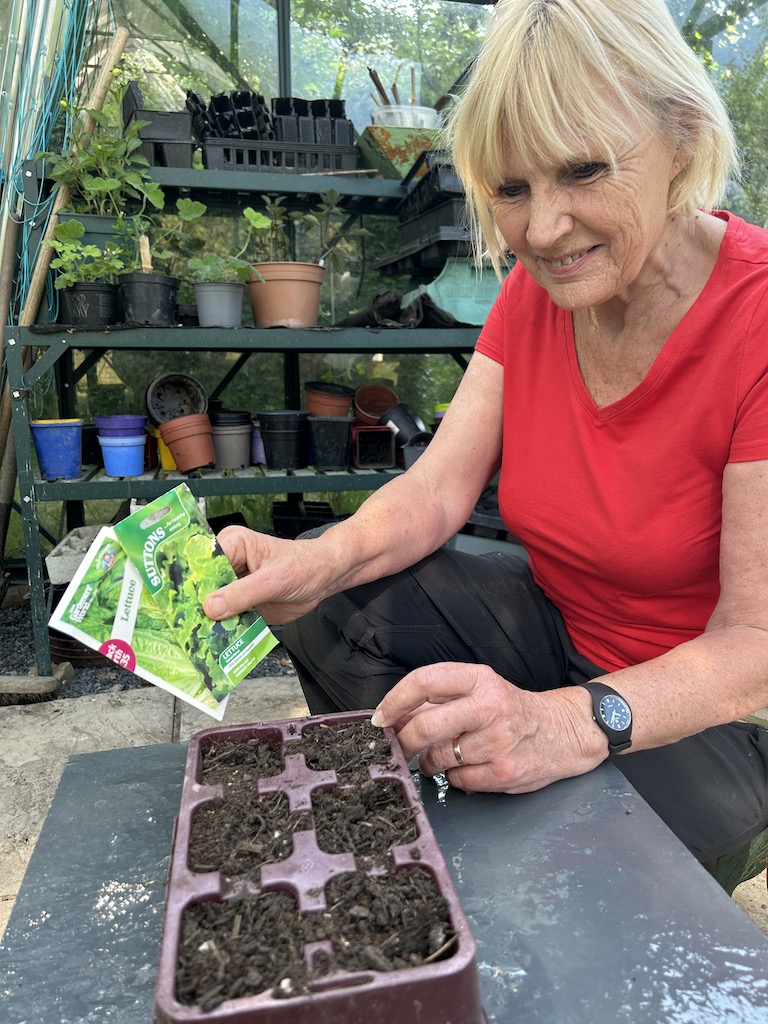
- Uh-oh, looks like it’s going to be another bumper year for the plums. They are clustered thickly on the branches, and if we leave them like that, I foresee a lot of broken branches later on. So, with a rather heavy heart, I need to thin the fruit. I’ll take out any that are damaged or diseased, any that are smaller than the others, and finally enough baby plums to leave a fruit every couple of inches or so along the branches.
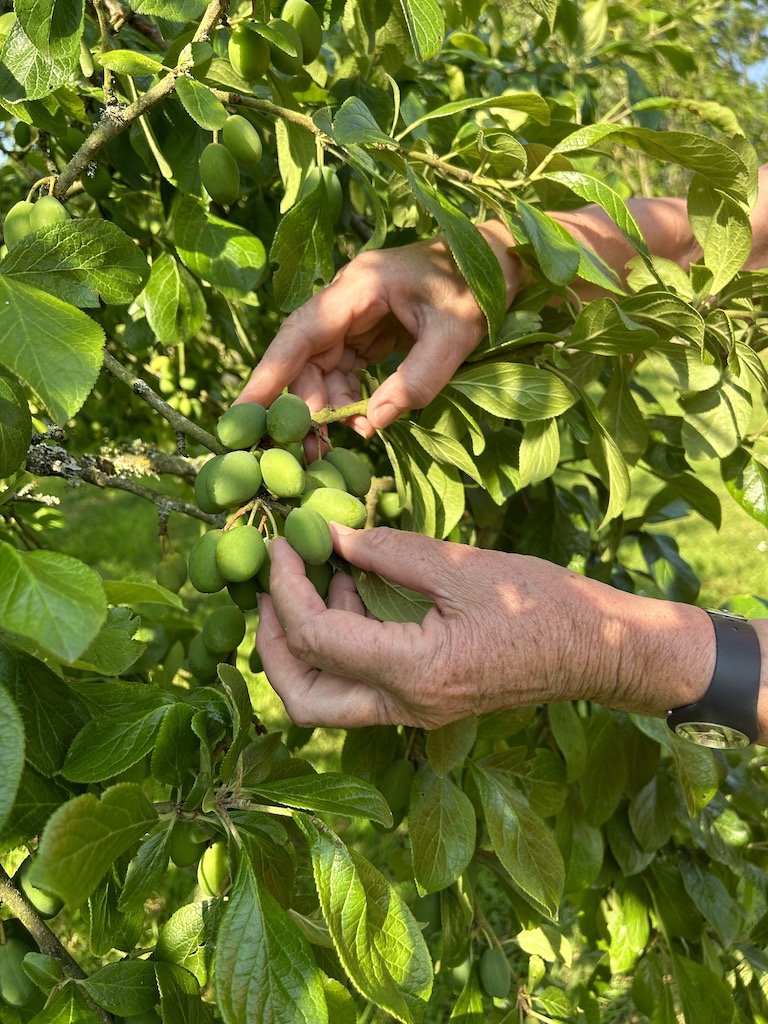
A friend of the3Growbags and brilliant gardener, Bill Tait, talks of the ‘ June drop’ (and has obviously had to deal with a huge plum harvest like mine last year!):
‘When fruit trees have been very successfully pollinated and develop masses of fruit, they naturally shed a number to allow others to develop and produce seeds. This is known as the June Drop. Invariably there will still be too many fruit to grow to the size we’d like so some thinning is required. In the case of apples, remove the king fruit first; that is the large one in the centre of the cluster. This has a much thicker stalk and these fruit keep less well when stored.
‘Wait until the June Drop has finished and depending on the numbers of fruit, carefully thin out to one or two fruit per cluster.’
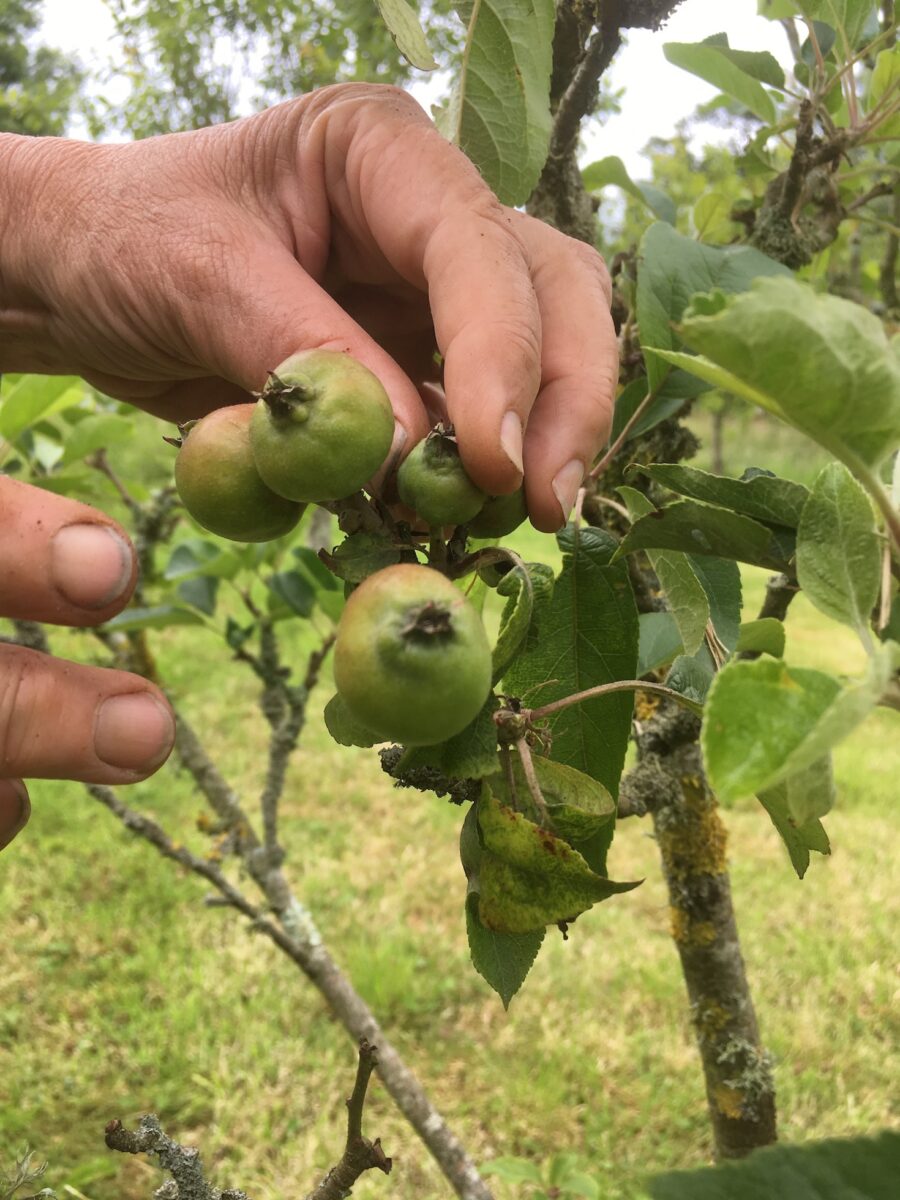
‘June drop’ and ‘king fruit’ – our dictionary of fruit tree maintenance is expanding – thank you Bill!
For a short step-by-step guide on taking cuttings now, here’s Elaine to show you how.
Laura made a terrific series of little videos on how to grow sweet peas – click on this link to find out more!
NB If you’re not already a subscriber and you’d like a bit more gardening chitchat from the3growbags, please type your email address here and we’ll send you a new post every Saturday morning.
